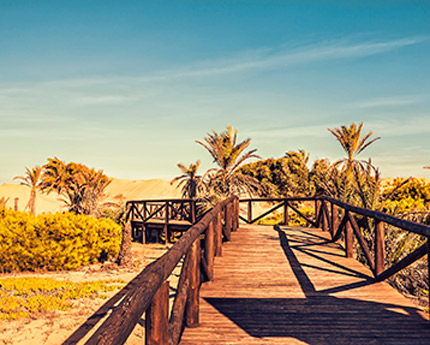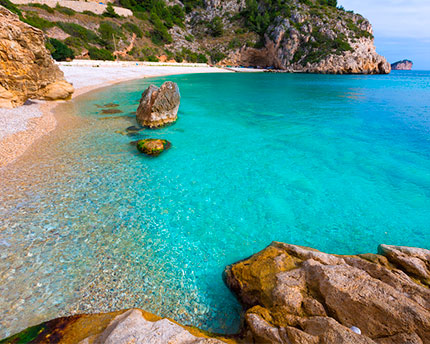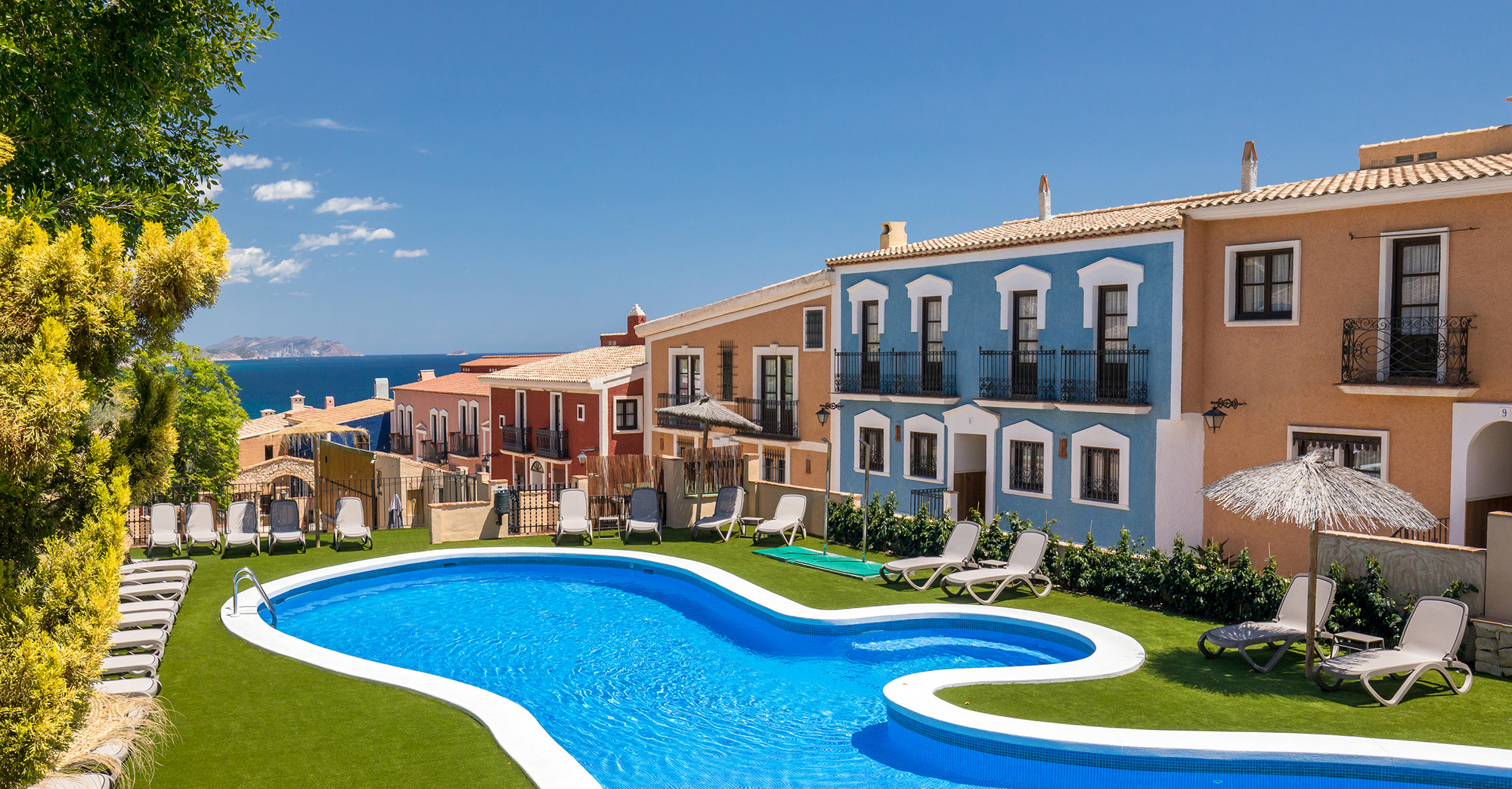Steep Cap de la Nau is the most eastward point on the Iberian Peninsula and the first place to greet the morning sun. It’s an area of great beauty with countless geographical treasures including tiny hidden caves (many of which can only be reached by boat), vertiginous cliffs, and unbeatable views of the coast from any of its many viewpoints.
Join us on a journey around the area, which belongs to the tourist-orientated town of Jávea and separates the gulfs of Alicante and Valencia. Read on to discover all its secrets.
Cap de la Nau and other coves in Jávea
As you head southwards from Jávea along the coast you soon enter the land of the capes. The first you’ll meet is Cap Prim (also known as Cap de Sant Martí) and the next is Cap Negre. Both formations stand like sentinels on either side of the spectacular tiny island of Portixol, just 200 m from the coast.
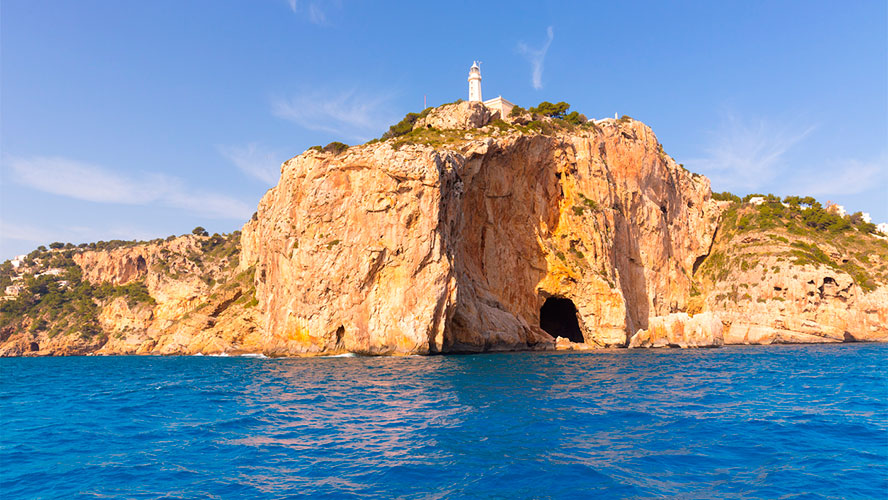
Once you’ve passed Cap Negre and crossed a sea of detached houses with pools (this area was once praised for its huge green expanse of Mediterranean woodland) you’ll spot the majestic, slim white lighthouse that tells you you’ve reached Cap de la Nau.
Cap de la Nau lighthou
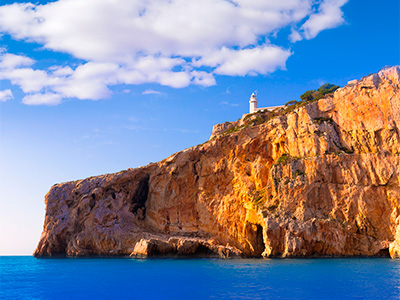
The white lighthouse of Cap de la Nau is 20 m high and stands no less than 122 m above sea level. It has an octagonal floor plan and the consistent beams that it emits each night can be spotted 23 nautical miles away.
The lighthouse was built fairly recently and although the works were put out to tender in 1914, construction didn’t actually start until 1923 — the lighthouse was fully operational five years later. A road had to be built specifically to bring the construction materials to the site, which was why the building works were delayed.
Sea caves in Cap de la Nau
The sheer cliffs at Cap de la Nau hide secret spots that can only be seen and reached by boat. There are numerous caves along the coast here that were gradually created by the waves crashing against the land.
One of the most spectacular caves is right underneath Cap de la Nau itself. It’s known as the Cova dels Orgues (Cave of the Organs). Its huge, dark domes contrast with the turquoise waters below and fairly large boats can fit inside.
Scuba diving on boat trips around Cap de la Nau
It comes as no surprise to learn that lots of tourists who visit the area are keen to explore the cape from the sea, especially because its impressive cliff walls, hidden coves and secret caves can only be reached by boat.
Numerous boat trips set off from Jávea and visit the three large capes in the area, offering visitors the chance to go scuba diving or snorkelling in some of the coves. Trips last two hours and are charged per person.
Access to the caves by motorboat is restricted to protect the environment, so a less invasive and more sustainable way to visit the area (provided the weather is suitable and you’re in good physical shape), is to reach the capes by kayak. You can hire kayaks from the nearby beaches of La Granadella and Portixol (see below) and a 3-hour trip should give you more than enough time.
Beaches and coves at Cap de la Nau
The Cap de la Nau area has some of the most spectacular beaches on Alicante’s Costa Blanca and in the entire Valencian Community. La Granadella cove is definitely one of the best and this spot is highly sought-after by divers who want to go scuba diving in Cap de la Nau. This tiny, pebbly beach is reached along a narrow road and it has blue flag status, meaning it has excellent facilities (showers, lifeguards, disabled access, etc.), and a wonderful restaurant. It stands out for its turquoise waters in an unspoilt setting and the little cove is surrounded by green ravines populated by Mediterranean pine trees.
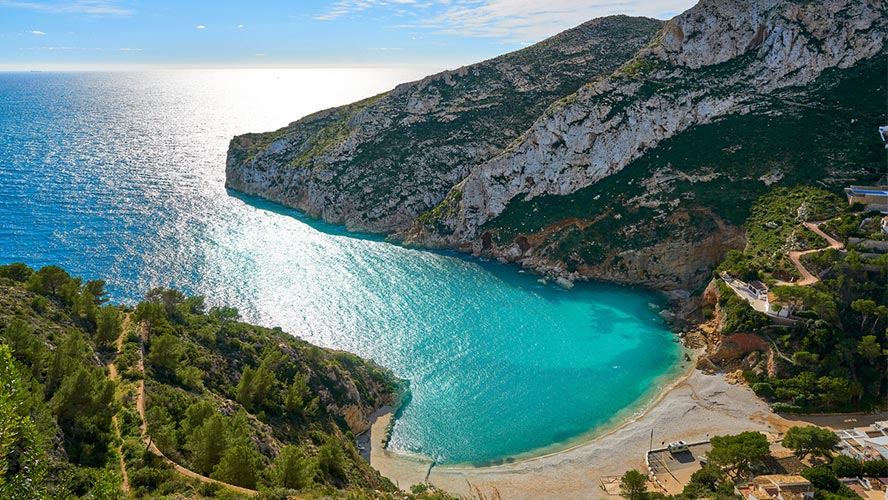
To the north of Cap de la Nau is Portixol, another beautiful cove, which sits opposite the island of the same name and has impressive views. Among the facilities you’ll find here are some great bars and a lifeguard service. When the weather permits, you can swim to the island from the beach. If you decide to do this, it’s a good idea to wear water shoes so that you can walk across the island without getting sore feet.
Between La Granadella cove and Cap de la Nau, under the Ambolo tower, you’ll find minuscule Ambolo cove, a spot that is popular with naturists.
Trail of Cap de la Nau viewpoints
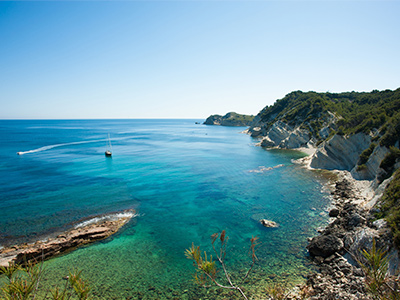
There are numerous well-signposted viewpoints along the entire coast of cliffs that border Cap de la Nau. In fact, the ‘viewpoints trail’ leads to each of these places and delights visitors with a series of panoramic views. The route consists of 15 viewpoints and begins to the north of Jávea at the viewpoints of Cap de Sant Antoni and Els Molins. After crossing Jávea southwards, the Cap de la Nau viewpoints trail ‘proper’ starts at El Arenal point, crosses Blanca cove and ends at what is considered to be the most beautiful view in the area: the view from Portixol viewpoint.
The viewpoints trail then continues along the cliffs, passing Cap Negre, Cap de la Nau and the Ambolo tower, finishing close to La Granadella.





































































